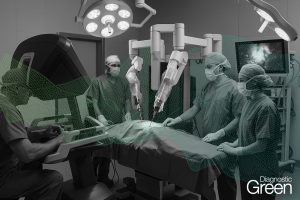Following orthopaedic trauma, bone devitalization is a critical determinant of complications such as infection or nonunion. Intraoperative assessment of bone perfusion has thus far been limited. Furthermore, treatment failure for infected fractures is unreasonably high, owing to the propensity of biofilm to form and become entrenched in poorly vascularized bone.
Fluorescence-guided surgery and molecularly-guided surgery could be used to evaluate the viability of bone and soft tissue and detect the presence of planktonic and biofilm-forming bacteria. This proceedings paper discusses the motivation behind developing this technology and our most recent preclinical and clinical results. Fluorescence-guided debridement and fluorescence-guided surgery are very promising applications of intraoperative fluorescence imaging.
As the techniques are refined, made more quantitative and comparable across subjects, and more accessible to surgeons we suspect that the impact of this field will continue to grow. Currently, commercial systems have focused on a handful of applications such as oncology, gastrointestinal and cerebrovascular. However, orthopaedic trauma is one of the most common surgeries and reasons for hospital admission, and likely represents a market at least 10x greater.




